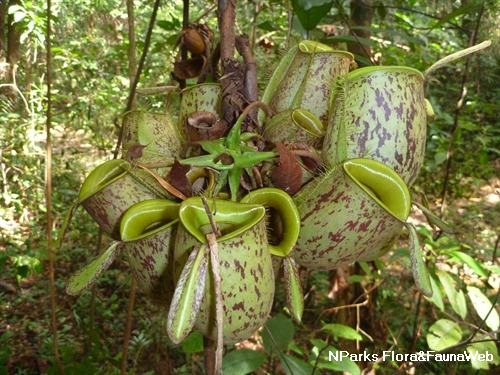
Back
Nepenthes ampullaria Jack
| Family Name: | Nepenthaceae |
| Synonyms: | Nepenthes ampullacea |
| Common Name: | Narrow-lid Pitcher Plant, Tropical Pitcher Plant, Flask-Shaped Pitcher Plant, Monkey Cup, Periok Kera, 猪笼草 |
Name
Classifications and Characteristics
| Plant Division | Angiosperms (Flowering Seed Plants) (Dicotyledon) |
|---|---|
| Plant Growth Form | Climber, Creeper, Herbaceous Plant |
| Lifespan (in Singapore) | Perennial, Semi-Annual / Annual-Like |
| Mode of Nutrition | Autotrophic, Heterotrophic (Insectivorous / Carnivorous) |
| Plant Shape | Compact |
| Maximum Height | 6 m to 15 m |
Biogeography
| Native Distribution | Thailand, Peninsular Malaysia, Singapore, Indonesia (Sumatra, Borneo), Papua New Guinea |
|---|---|
| Native Habitat | Terrestrial (Secondary Rainforest, Disturbed Area / Open Ground, Freshwater Swamp Forest) |
| Preferred Climate Zone | Tropical |
| Local Conservation Status | Native to Singapore (Vulnerable (VU)) |
| CITES Protection | True (Appendix II) |
Description and Ethnobotany
| Growth Form | It is a herbaceous to semi-woody climber, growing up to 15 m tall. The slender stem bears many short branches with rosettes of leaves at intervals in the lower parts of the stem, but at the higher parts, less branches and more leaves are borne. |
|---|---|
| Foliage | For the rosette-leaf bearing branches, the leaf blades of the alternate, stalked to stalkless leaves are lance- or spoon-shaped, and are 2–5 by 0.5 cm. At the tips of the rosette leaves are urn- to egg-shaped, 2–10 cm-long pitchers that have narrow lips. The pitchers are also green to almost white, with pink or red spots or blotches. For the leaves in the upper parts of the stem, the leaf blades are narrow and long, being about 25 by 6 cm, with tips that extend to form slender, coiling tendrils. Pitchers almost never form here, but if they do, they are small, funnel-shaped and not as well developed as the pitchers in the rosette leaves. These upper pitchers are rarely developed and seldom observed, and are thought to be vestigial structures formed as a result of the plant being stressed by very poor soils. |
| Flowers | Its green, 1.3 cm-wide flowers are borne on shoots that are up to 45 cm long. The small, yellow, petal-less, clustered into erect raceme inflorescences up to 45 cm long. Plants are dioecious, with male and female flowers found on separate plants. Blooming occurs once or twice per year, lasting for several weeks, pollinated by nocturnal insects. When blooming period coincides with that of other Nepenthes species in the vicinity, hybridization may result. Natural hybrids in Singapore include: Nepenthes × trichocarpa (= N. ampullaria × N. gracilis) and Nepenthes × hookeriana (= N. ampullaria × N. rafflesiana). |
| Fruit | Its 2.5 cm-long fruits are capsules that mature from green to brown, splitting when ripe into four halves to release tiny, thread-like seeds that are wind-dispersed. |
| Others - Plant Morphology | Plant forms sub-surface runners and off-shoots that give rise to carpets of basal rosettes spreading across forest floor, often half-buried amongst leaf litter. Well-adapted to intercept falling detritus from forest canopy, such as dead leaves and bird feces, and thought by some botanists to be evolving from a purely insectivorous to a mostly detritivorous diet. Least common amongst the 3 Nepenthes species native to Singapore, found locally in Kent Ridge Park, Central Catchment Reserves and Western Catchment forests. Species was first discovered in Singapore in 1819 by Dr William Jack (1795 - 1822), Scottish botanist and surgeon with the East India Company, when he accompanied Stamford Raffles to the island. Jack's botanical discoveries in the Malesian region helped encourage the founding of the precursor to the Singapore Botanic Gardens in 1822, and he died from acute malaria in the same year at the age of 27, while out at sea near Sumatra. |
| Habitat | It grows in secondary or swampy forests, and wet open places, from the lowlands to about 2,100 m altitude. In Singapore, this species is usually found in adinandra belukar (secondary forest on degraded soil, dominated by tiup tiup, Adinandra dumosa). |
| Associated Fauna | Its flowers are insect-pollinated. A butterfly, the pitcher blue (Virachola kessuma deliochus), feeds on the seed pods too. Pitchers sometimes colonized by cannibalistic larvae of local mosquitos (Toxorhynchites species) adapted to the pitcher's fluid, and which not only feed on the decomposing parts of pitcher victims, but also tear apart fellow larvae co-exisiting within the same pitcher --- after which whose remains are digested by the plant. Pitchers in Peninsular Malaysia and Singapore visited by freshwater crabs (Geosesarma malayanum, Geosesarma perracae), which steal drowned insects from within pitchers, but are regarded as indirectly beneficial to the plant, as their untidy eating habits drop smaller (and hence more digestible) pieces of insects back into pitchers. In Borneo, tadpoles of Kalophrynus pleurostigma (Black-spotted Sticky Frog) found living inside pitchers. |
| Cultivation | Plant can survive in semi-shade condition, but will grow better under full sun. Prefers moist, poor-nutrient acidic media like peatmoss, sphagnum moss or salt-free cocopeat. Avoid fertilizing, especially with fast-release fertilizers, which may burn or kill the plant, or result in excessive foliage growth without pitcher formation. Propagate by seeds (variable progenies), or stem cuttings. If taking tip cuttings, use 4-node cuttings (tip plus 3 lower leaves) to prevent tender growing tip from rotting before establishment. Single-node cuttings from lower parts of the plant are also possible. Basal rosettes joined by underground runners can be divided and potted up separately. |
| Etymology | Genus epithet 'Nepenthes' derived from Greek terms 'ne' (not) and 'penthos' (sorrow, grief), meaning 'no sorrow' or 'banished sorrow', as based on the ancient Greek name for an anti-depressant drug called 'Nepenthe' which drives away all sorrows by the means of forgetfulness, and used here in connection with the reported medicinal qualities of some Nepenthes species. Species epithet 'ampullaria' means 'flask-shaped', a reference to the pitchers. |
| Ethnobotanical Uses | Food (Herb or Spice) Medicinal: Plant contains gylcosides and phenols. In Malaysia, roots boiled and made into poultice to treat stomachaches and dysentery. Stem decoction drunk to relieve fever. Others: Climbing stems sometimes used for ropes or woven handicrafts. The lower pitchers are used as containers to steam rice in Borneo, and are also used in exorcism. |
Landscaping Features
| Landscaping | The small and stout pitchers from the lower leaves are often found in dense clumps on the ground, making it a pretty sight. |
|---|---|
| Desirable Plant Features | Ornamental Foliage |
| Landscape Uses | Suitable for Hanging Baskets, Interiorscape/ Indoor Plant, General, Focal Plant, Terrarium, Container Planting, Parks & Gardens, Small Gardens |
| Thematic Landscaping | Carnivorous Garden, Naturalistic Garden |
Fauna, Pollination and Dispersal
| Fauna Pollination Dispersal Associated Fauna | Butterfly Host Plant |
|---|---|
| Pollination Method(s) | Biotic (Fauna) (Insects (Butterfly, Moth), Insects (Ant, Beetle, Fly, Thrip, Wasp)) |
| Seed or Spore Dispersal | Abiotic (Explosive Dehiscence) |
Plant Care and Propagation
| Light Preference | Full Sun, Semi-Shade |
|---|---|
| Water Preference | Moderate Water, Occasional Misting |
| Plant Growth Rate | Slow |
| Rootzone Tolerance | Easy to Grow, Poor Infertile Soils, Acidic (low pH) Soils, Moist Soils, Well-Drained Soils |
| Pruning | Pruning usually not needed, unless to obtain stem-cuttings for propagation. |
| Fertilizing | Avoid fertilizing, especially with high-analysis fast-release fertilizers, as these may burn / kill the plant., or result in lots of foliage lacking in pitcher formation. If need be, use diluted strength of weak organic fertilizers (eg. orchid-type fertilizers, Osmocote). |
| Propagation Method | Seed, Stem Cutting, Stolon / Runner, Division |
| Propagule Establishment Remarks | Pot cuttings up in nutrient-poor media, eg. salt-free cocopeat, peatrmoss or spaghum moss. Keep media moist and do not allow it to dry out. |
| Maintenance Requirements Remarks | If kept away from rain, try to fill the pitchers with rainwater up to half the pitcher's depth. |
| Propagation Method Remarks | If taking tip cuttings, use 4-node cuttings (growing tip and 3 leaves below) to prevent tender tip from rottting before establishment. Single-node cuttings possible from lower parts of the plant. Multiple basal rosettes can be divided by cutting underground runners. |
Foliar
| Foliage Retention | Drought / Semi-Deciduous, Evergreen |
|---|---|
| Mature Foliage Colour(s) | Green |
| Mature Foliage Texture(s) | Smooth, Glossy / Shiny, Leathery, Thick |
| Foliar Modification | Pitcher Trap |
| Foliar Type | Simple / Unifoliate |
| Foliar Arrangement Along Stem | Rosulate / Rosette |
| Foliar Attachment to Stem | Petiolate |
| Foliar Shape(s) | Non-Palm Foliage (Lanceolate, Spathulate) |
| Foliar Venation | Parallel |
| Foliar Margin | Entire |
| Foliar Apex - Tip | Acute |
| Foliar Base | Truncate / Square |
| Typical Foliar Area | Microphyll ( 2.25cm2 - 20.25 cm2 ), Notophyll ( 20.25cm2 - 45 cm2 ) |
| Prominent Young Flush Colour(s) Remarks | Hairy reddish-brown |
Non - Foliar and Storage
| Mature Bark Texture | Peeling / Flaking / Papery |
|---|---|
| Stem Type & Modification | Woody, Herbaceous, Runner / Stolon |
| Root Type | Underground (Fibrous Root) |
| Mature Bark Texture Remarks | Corky bark on woody stems |
Floral (Angiosperm)
| Flower & Plant Sexuality | Unisexual Flowers , Dioecious |
| Flower Colour(s) | Green |
|---|
| Flower Grouping | Cluster / Inflorescence |
| Flower Location | Axillary |
| Flower Symmetry | Radial |
| Flower Size - Remarks | Small, held in inflorescence |
| Inflorescence Type | Raceme |
| Flower Lifespan on Plant | Several Days |
| Flowering Habit | Polycarpic |
Fruit, Seed and Spore
| Mature Fruit Colour(s) | Brown |
|---|---|
| Fruit Classification | Simple Fruit |
| Fruit Type | Dehiscent Dry Fruit , Capsule |
Image Repository
Others
| Master ID | 29129 |
|---|---|
| Species ID | 3438 |
| Flora Disclaimer | The information in this website has been compiled from reliable sources, such as reference works on medicinal plants. It is not a substitute for medical advice or treatment and NParks does not purport to provide any medical advice. Readers should always consult his/her physician before using or consuming a plant for medicinal purposes. |


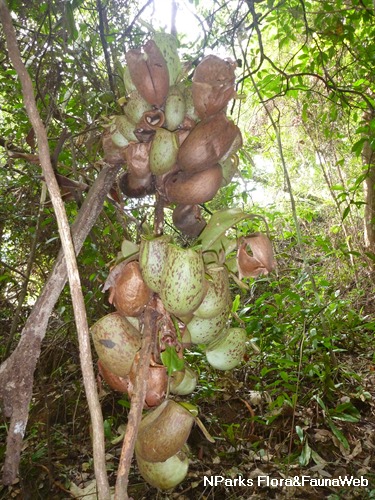

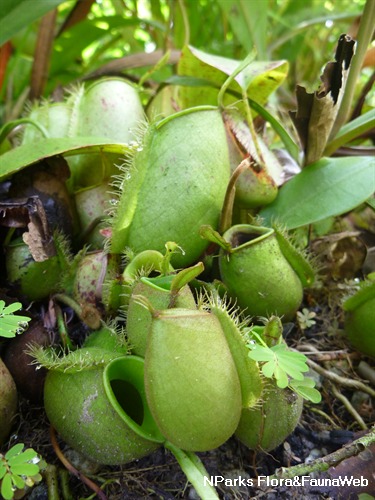
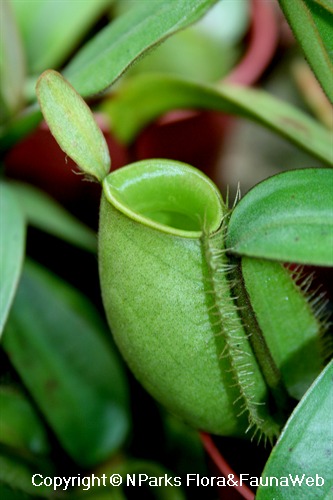
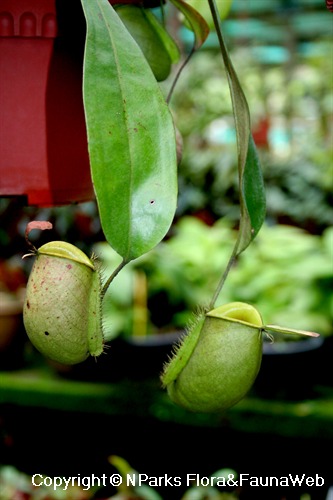

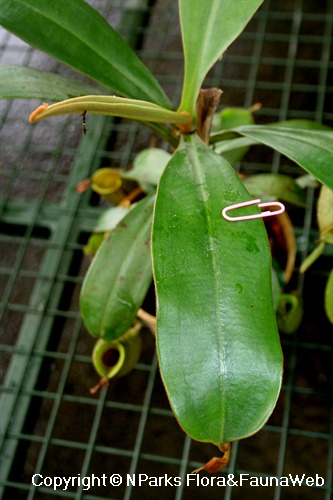
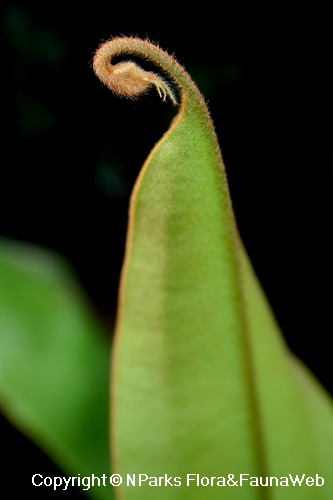


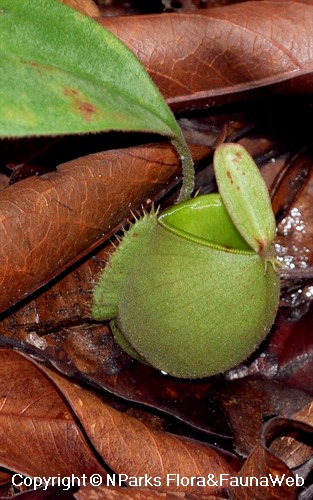

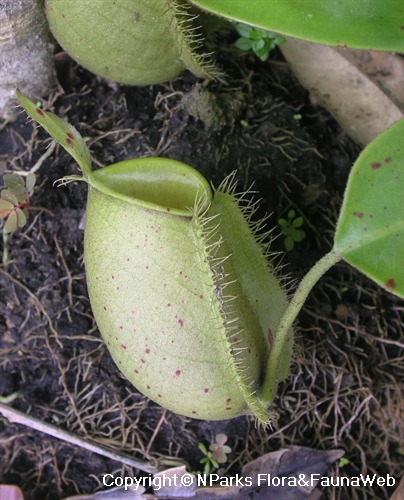
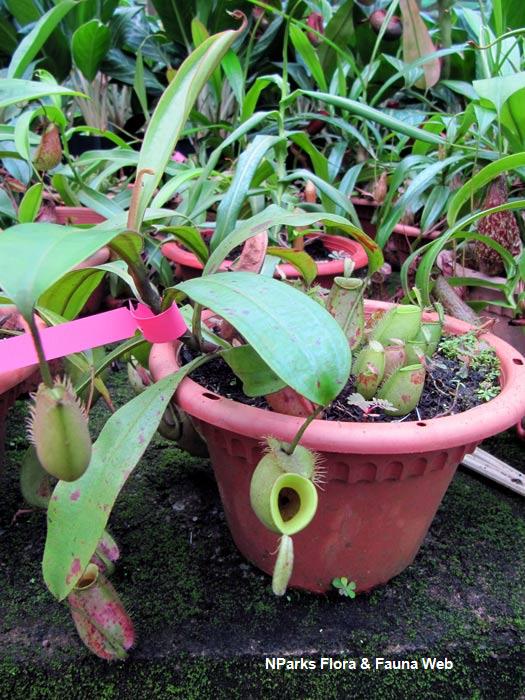
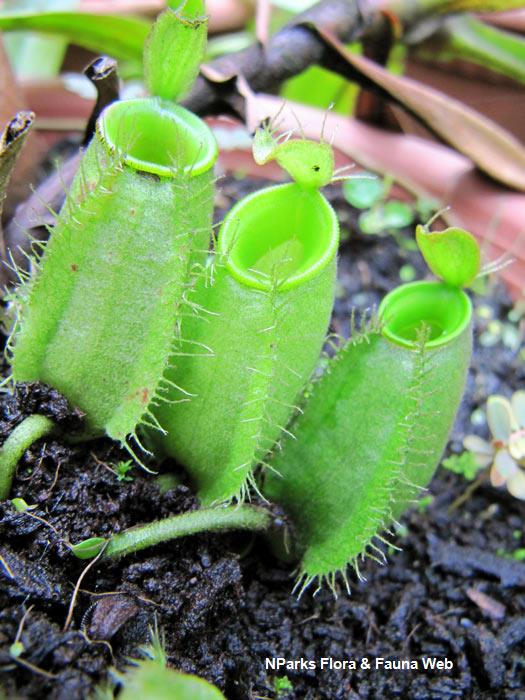
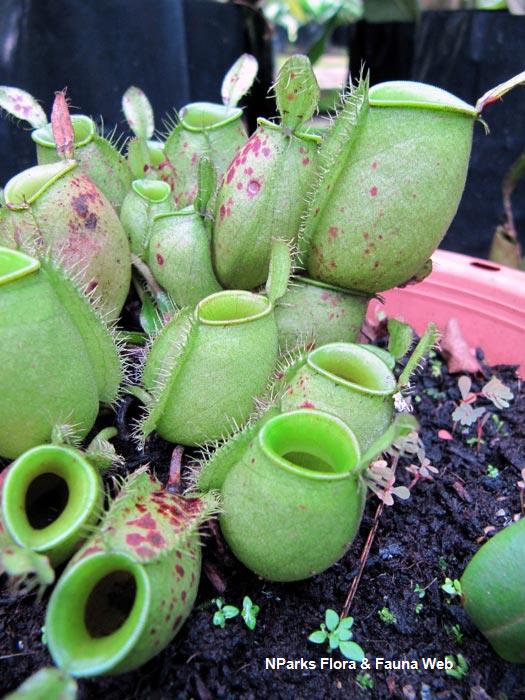
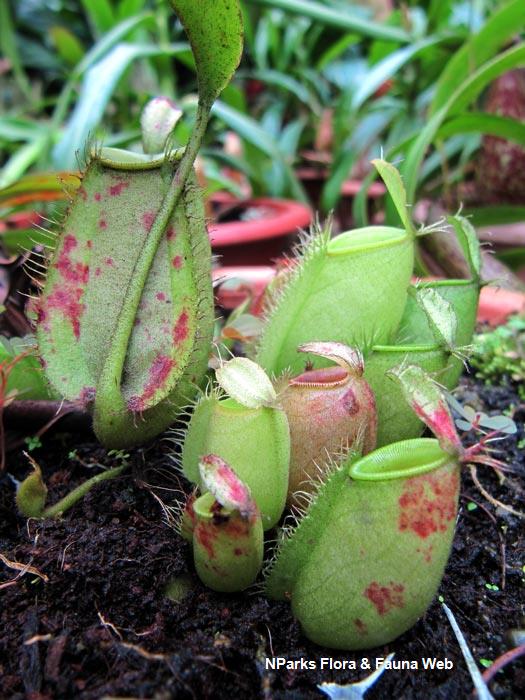
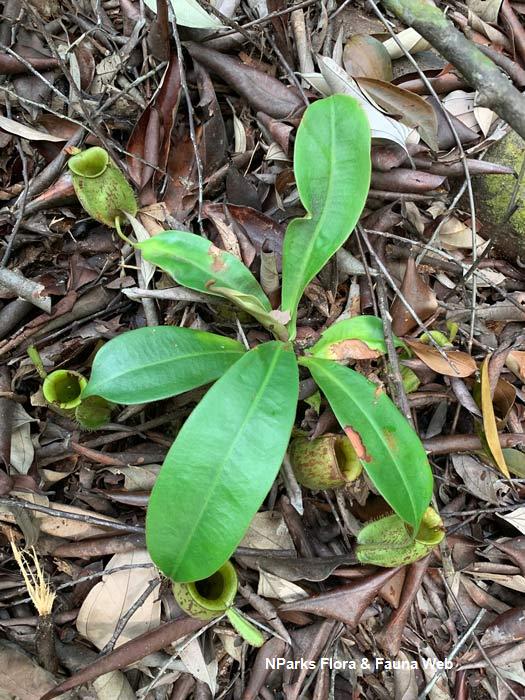
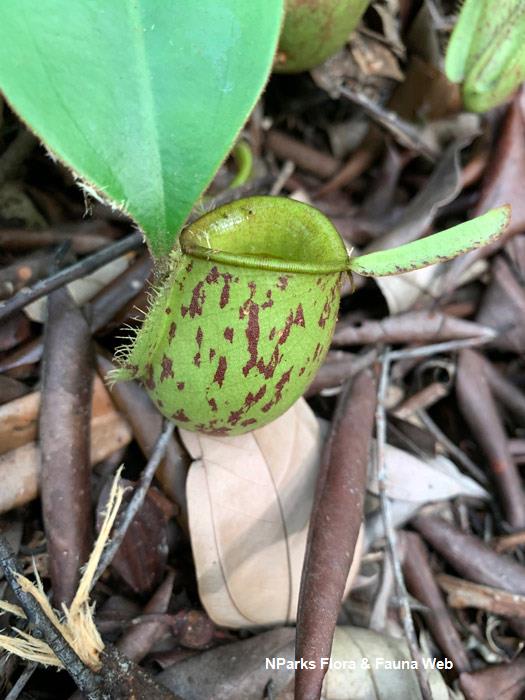

.jpg)
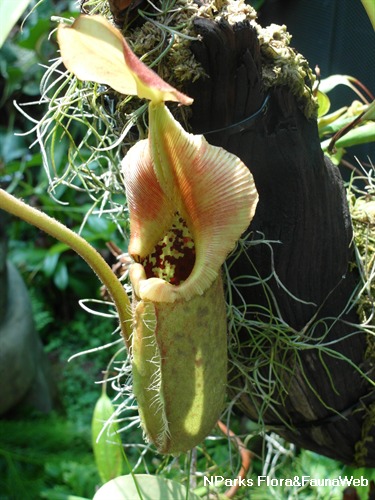
.jpg)